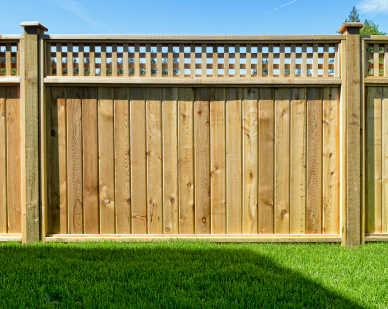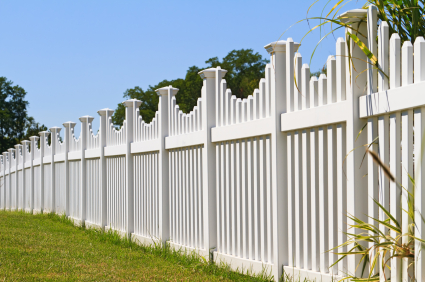As the old adage goes, good fencing makes good neighbors.Now, there are other ways to deal with problematic neighbors – as this guide will tell you, but for those who are looking for a new fence for more organic, or aesthetic reasons, this post will help you sort out the costs that are associated with that.
Having an excellent fence installed can go a long way towards keeping your property secure and preventing issues with trespassing, misconduct and vandalism. Getting a new fence, however, can be a significant expense, one that includes the cost of the fence itself and the installation. That cost varies widely depending on the length and style of your fence, the materials you intend to use and your choice of installation professional.
One of the most popular materials used to construct fences is wood. Depending on the type and grade of wood used, wood fencing can range from very inexpensive to very expensive. All wood fences share some degree of vulnerability to the elements, certain pests and fire, although pressure treating and certain coatings can mitigate that vulnerability somewhat. Wood also requires some degree of maintenance to stay attractive and functional. Nevertheless, many homeowners opt for wooden fencing because of its classic appearance.

Common grades of wood used in fencing include clear wood, which has almost no flaws or imperfections; premium or #1 grade, which contains only small imperfections such as knots; standard or #2 grade and utility grade. Higher-grade wood is more expensive, of course, but the lack of imperfections can be aesthetically pleasing. It is worth noting, however, that many homeowners actually prefer the rustic appearance of lower-grade wood. Furthermore, if the fence is going to be painted, the presence or absence of surface imperfections is somewhat moot.
Vinyl fencing is growing in popularity because it is durable and requires almost no maintenance. Because it is the same color all the way through, it requires no painting or staining, and it maintains its new appearance for quite some time. Vinyl is available in a wide range of heights and styles and has few finish imperfections. However, it can also be more expensive than wood or metal.

Several metal fencing options are available, ranging from aluminum to wrought iron. Aluminum is a fairly inexpensive, lightweight and versatile material available in many colors, heights and styles. It can be attached to many different types of posts, including rock, and is excellent for decorative or boundary fencing. Perhaps the biggest advantage of aluminum fencing is that it is impervious to rust and tarnishing, which means maintenance is almost completely non-existant.
For those who can afford it, classic wrought iron fencing is an excellent option. Although it is a metal, wrought iron has an almost wood-like grain because of its low carbon content. The most common types of wrought iron fencing are the Essex fence, which has an ornate, noble appearance, and the somewhat simpler Concord fence. Either type of wrought iron fencing is fairly expensive to purchase and install, but fortunately it requires little maintenance once it is in place.
The cost of fencing also depends on the style of fencing to be used. Privacy fences, which are essentially solid barriers, tend to be relatively expensive because they require a great deal of material. Three-rail fencing is often somewhat cheaper, though it does not provide as much privacy. The classic picket fence tends to be even more expensive than privacy fencing.
Average Fence Costs and Variables
With all of these options available, the cost of fencing varies widely depending on the material, style and length of the fence. On average, having a fence constructed and installed out of basic materials costs about $13 per linear foot, of which about $8 is for the fencing itself and about $5 is for installation. Mid-range fencing averages around $16 per linear foot, including about $10 for materials and $6 for installation. High-end fencing can be $19 or more per linear foot, with about $12 per foot for materials and another $7 for the installation. The actual cost of fencing varies widely around those numbers, of course: Market forces govern the cost of materials, and installation costs tend to be higher in affluent and heavily populated areas.
Since installation represents a huge portion of the cost of new fencing, up to 50 percent in some areas, it is always good to look for ways to reduce that cost. For wood fencing, consider hiring a carpenter to do the installation instead of paying extra for a specialized fencing contractor. Just make sure that the carpenter has prior experience working with wooding fencing. Consider taking care of some of the extra costs by removing existing fencing yourself. If you have the time and hands-on aptitude to do it well, you can save thousands by installing your own wood fencing.
Tags: average cost, fence, vinyl, wood, wrought iron
